
views
Searching for the Hamster

Remain calm. Most likely, you will find your hamster. Some people find it after a few hours, others find it after a few days, while some people find their hamster weeks later. Don't lose hope. Remember, sudden movements and loud noises may scare your hamster away, so ask everyone to stay calm and quiet, and to keep away from the area.
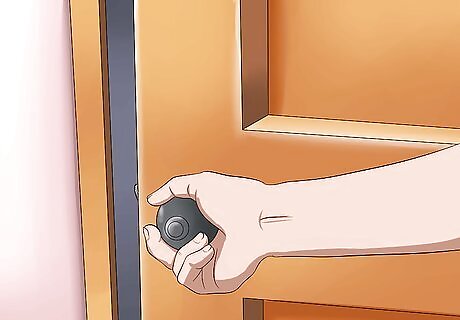
Shut the doors. Secure the areas where the hamster may hiding. Close the doors to the rooms once you find out the hamster is missing. Cover up any crevices in the wall or floors, and make sure all the windows are secure. Try to trap the hamster in the smallest area so it's easier to find. Plus, you don't want your hamster moving rooms while you search. Lower toilet lids to ensure the hamster doesn't drown. Tell everyone to be careful where they step while the hamster is missing.

Remove other pets. As soon as you discover your hamster is missing, remove any pets from the rooms. Pets you should watch include cats, dogs, and ferrets. If you can, place them outside, in secure rooms, or in crates. Remove any mousetraps, rat poison, or other harmful substances that your hamster may get into.

Search for the hamster. Search the rooms for the hamster. Hamsters like dark, warm places. Look for places that haven't been touched or seen light for awhile. Look where the pipes are, near heaters, behind the toilet, and behind furniture. You may also find hamsters in cabinets, behind drawers, under the refrigerator, behind the washing machine, or under beds. Grab a flashlight and check closets. Decide where your hamster likes to hang out. Where do you think it would like to go? Try to think about its behavior. Look for signs of hamster poop or seed trails.
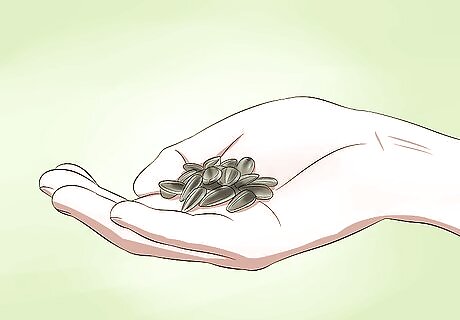
Set out food. One way you can determine which room the hamster is in is to leave a small pile of the hamster's favorite food in each room before you go to bed. Line food along the edge of the floorboards, where the hamster is more likely to walk. Close all the doors. Your hamster is likely to be in the room where the pile of food has been eaten, which will help you to narrow down your search.
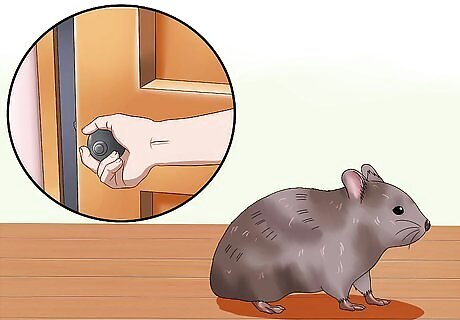
Secure the room once you discover it. If you verify which room the hamster is in, secure the perimeter. This means move all other people out of the room and close the door to lessen the chance of your missing hamster getting hurt by accident by other people. Then get on your hands and knees and crawl around. Check likely hiding spots, be quiet, and watch the escape routes.
Catching the Hamster

Leave the cage on the floor. Place the hamster's cage on the floor. Put some food and water in the cage, and leave it with the door open near where you think your hamster is hiding. Hamsters may eventually want to go somewhere secure that smells familiar. If you have an aquarium cage, you can place it on its side. Relocating the cage really works. "When I finally found him hiding behind furniture, I was having no luck catching him. Then I brought his cage to him and put a trail of food leading up to it. He eventually walked on in. Now my baby is back home." - Maggie G. Turn off the lights. "I lost my hamster a day ago, and after I turned off the lights, she pranced on my foot and licked my hand. I was able to reestablish trust when I wasn’t so scary when the lights were on." - Miraclehamster (wikiHow Community Member) Have a story our readers should hear? Share it with 1 billion+ annual wikiHow users. Tell us your story here.

Put out the wheel. Another way to try to catch the hamster is to put the wheel out. When you hear the squeaks at night, you will know which room the hamster is in. You may be able to sneak up on the hamster and catch it.
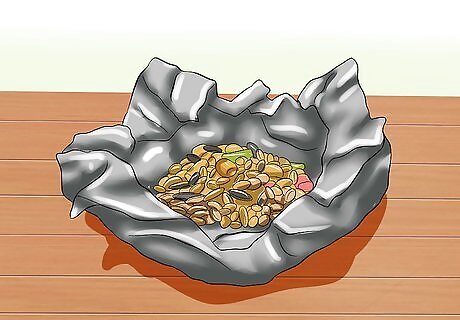
Place food in tinfoil. Put some of the hamster's favorite food on some tinfoil in corners of the room. Dim all lights late at night and listen for the hamster rustling the tinfoil as it goes after the food.
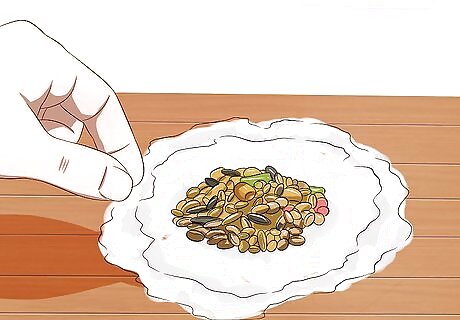
Surround treats with flour. When you put treats out at night, surround the treats with a ring of flour. When the hamster goes to the treats and takes them back to its hideout, the feet will leave a trail of flour back to where it's staying.
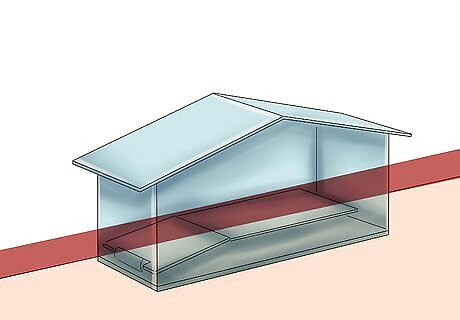
Try a humane mousetrap. A humane mousetrap might be a way to catch your hamster. Set them out at night, making sure to check them as soon as you wake up in the morning.
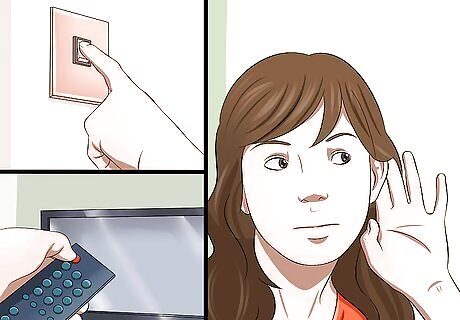
Listen for the hamster. Turn off all lights and electronics. Stand very still in the dark room. Listen for sounds of the hamster. You may have to wait a little bit. Eventually, you will hear the hamster moving around. You can try tying a string with a bell on it to a carrot stick. When the hamster eats the carrot stick, he will move the bell.
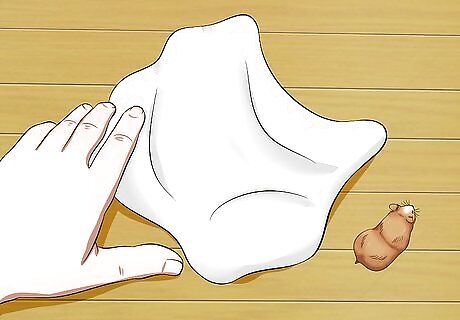
Toss a lightweight towel over the hamster. When you finally find the hamster, you need to catch it. Toss a lightweight towel over the hamster so that the towel covers it. This will stop the hamster and hold it in place while keeping it safe. Gently pick up the hamster and place it back in the cage.
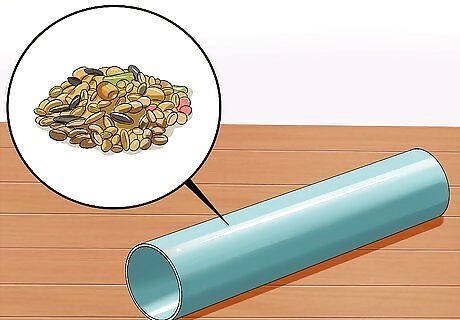
Lure the hamster into a tube. If you know where the hamster is, you can try to lure it into a tube with one closed end. Place the tube close to the hamster and place some food into the tube. When the hamster is inside, cover the opening and gently lift the tube. Place the hamster back into its cage.
Making a Bucket Trap
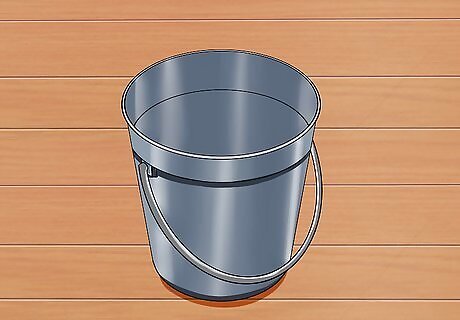
Choose a bucket. Find a clean, small clean bucket. The bucket needs to be deep enough so the hamster can't get back out, but shallow enough to not risk injury, put a clean blanket in the bottom to cushion it's fall. The bucket should be approximately 10" deep. Make sure that the bucket you are using is tall enough so it can't escape. Put a towel or shavings on the bottom to cushion your hamster when it falls in.
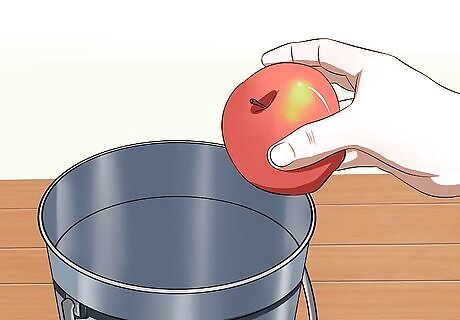
Put some food in the bucket. You need to lure the hamster to the bucket. To do this, place fragrant food inside, such as peanut butter or apples. You also can put a toilet paper roll inside the bucket. Put some cucumber inside so your hamster can stay hydrated, do not put a ceramic dish inside in case, it could injure itself in the fall.
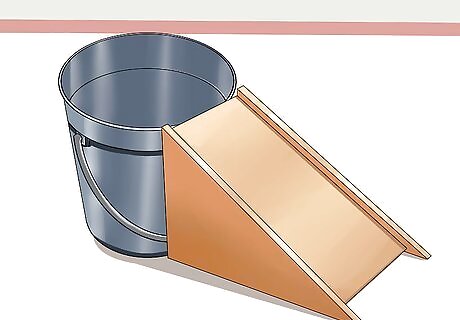
Make stairs for the hamster. Pile a few books, CD cases, or DVDs to act as steps into a bucket. You can also make Lego stairs, use hamster tubes from the cage, or build a ramp with a piece of wood. The stairs should lead up to the rim of the bucket.

Put a piece of paper on the top. Cover the top of the bucket with tissue paper. Your hamster will climb onto the paper and fall into the bucket.
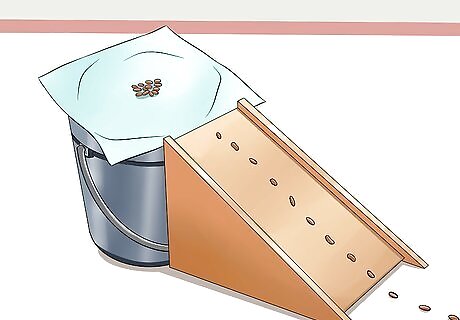
Lure the hamster into the bucket. Leave a trail of treats or hamster food leading to the bucket, and then up the steps and into the bucket. Line the steps up to the top of the bucket, and a place a small pile of food on the paper. Don't put too much food on the steps leading to the bucket. You want to lure the hamster, not make it full so it won't investigate further.
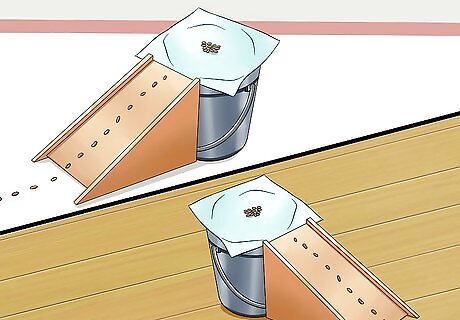
Set a trap in each room. If you haven't narrowed the hamster's location down to a single room, place a bucket trap in each room.
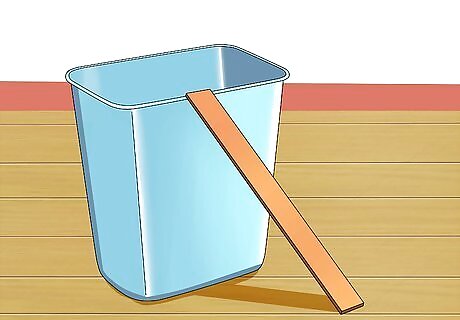
Use a trashcan instead. Similar to the bucket, use wax paper and a trashcan. Place wax paper or tinfoil over a trashcan. Do not fasten the paper or foil, simply rest it there. Lean a yardstick or ruler against the trashcan. This will allow your hamster to walk up the stick and onto the paper. Make a line of food or treats up the ruler and place a few in the center of the paper or foil. Make sure to use a shallow trashcan. The hamster should not fall any farther than 10 inches.
Preventing Future Breakouts
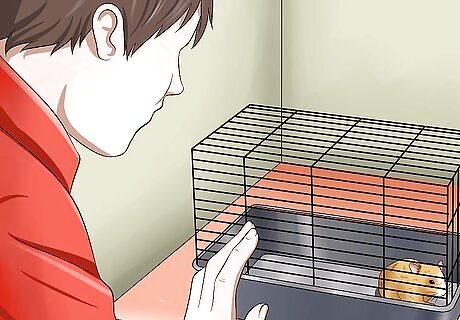
Make the housing more secure. Check for whatever came off, became loose, or doesn't work properly and allowed the hamster to escape. Fix it immediately. If the hamster escapes often, close the cage with a metal lock on the outside. A plastic lock can be hazardous and useless if your hamster chews on it.
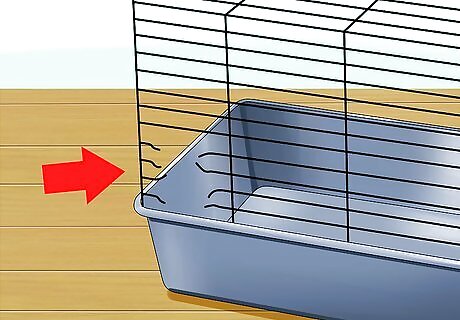
Check for holes. Double check your hamster's cage to see if it has chewed any holes into the bottom wiring or the sides. It might have chewed through the cage in places that you can't easily see.
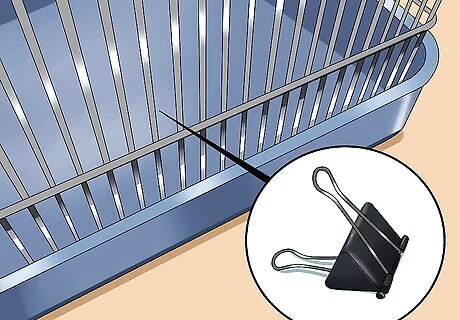
Secure the cage door. Make sure you reinforce the cage door. Try bulldog clips for wire cages. You can also try tape on the outside of cages, too.
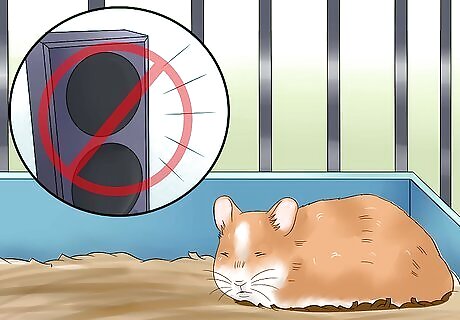
Remove sources of frustration or fear. If the hamster has been subjected to loud noises, constant comings and goings of people or pets, or other disturbances, it may hate where its housing is situated. Shift it to somewhere quieter and less frequented by other beings.
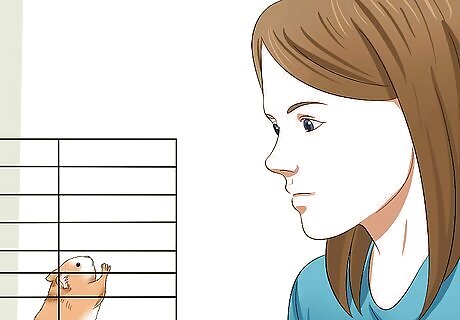
Check your hamster's comfort levels. If your hamster got out, it might be a sign that your hamster is unhappy and wants to get away. When you capture it, observe it and if it looks like it's sad, consider getting it new toys or food. Maybe it needs more attention; if so, give it some.



















Comments
0 comment